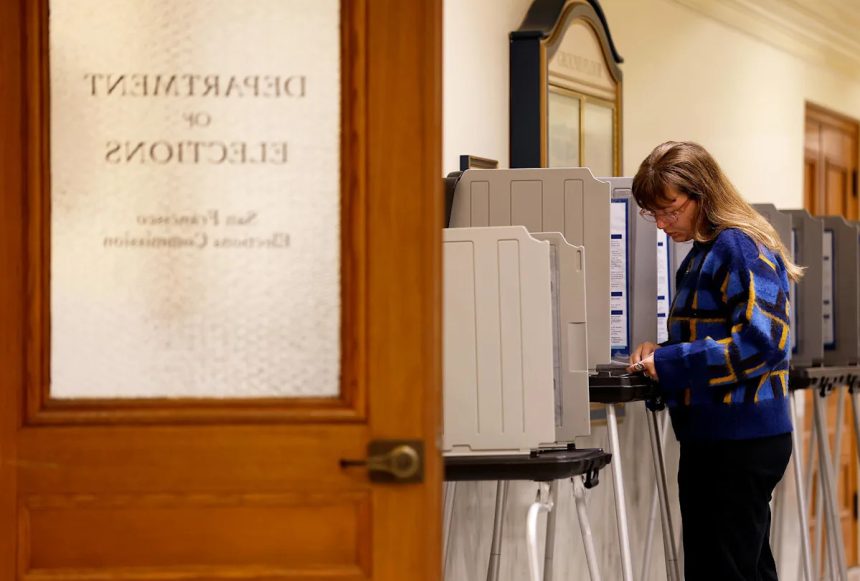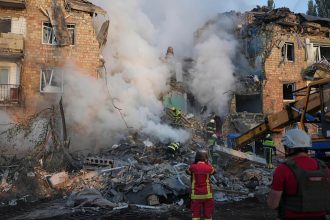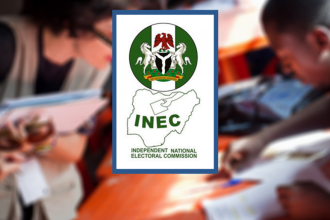The story of American democracy is not written in Washington. In recent days, we have seen again how it is shaped and renewed in places as different as the Indiana Statehouse, a state courtroom in Utah and voting booths in California.
President Donald Trump doesn’t see it that way, which is why he’s been pressuring Republicans to bend to his will and redraw congressional maps ahead of next year’s midterms.
But that effort keeps getting stopped by the people who actually run the government, patriots who pledge allegiance to the Constitution, not the man currently occupying the Oval Office.
While top Republicans in Indiana seemed ready to do Trump’s bidding, the rank-and-file in the state legislature balked. In Utah, Judge Dianna Gibson rejected a Republican-approved congressional map in favor of one that would create a Democratic-leaning district. And in California, voters themselves overwhelmingly approved a redistricting effort meant to counter Texas’ gerrymander.
The lesson here is simple but profound: when we fight for democracy in statehouses, courthouses and living rooms, democracy wins.
Democrats and voting rights advocates have started to play the long game when it comes to the courts and the maps. In recent years they have brought cases in hostile jurisdictions, recruited plaintiffs who understand what is at stake and funded legal challenges one district at a time. It is not glamorous work, but it is how you build structural power. Utah and Alabama have now joined Wisconsin — where the state Supreme Court struck down Republican-drawn legislative maps earlier this year — as proof that resistance through process works. In North Carolina, where similar challenges are still underway, the persistence itself is part of the story.
These victories are not accidental. They are the result of institutional stamina, of lawyers, organizers, and everyday citizens who refused to give up on the law even when it felt like it was rigged against them. Trumpism tried to make cynicism a strategy: to convince people the system was too broken to fight. What we are seeing now is that belief itself was a trap. The people who kept faith with process, who understood that courtrooms can be battlegrounds for justice, are proving that democracy can still be shaped by those willing to fight for it.
There is another lesson in these rulings. The fight for democracy has to be local. Organizers and lawyers in states like Utah and Alabama have turned to their state constitutions, not federal law, to defend fair representation. They have invoked clauses about free and fair elections and equal participation, taking seriously what those words mean. That is the quiet genius of our system of government. Democrats are using the same state-level power conservatives once monopolized to expand, not restrict, democracy.
The Republican Party wanted to nationalize its control, using gerrymandering to lock in minority rule for a generation. Instead, it has sparked a civic awakening that stretches from the Atlantic to the Pacific. From rural Utah to the Black Belt of Alabama, citizens are reclaiming the local levers of power that determine who counts in the democratic process.
There is a powerful historical echo here. After Reconstruction, when federal protections for Black voters collapsed under violence and legal manipulation, it was often through state constitutions and local courts that Black citizens and their allies fought to recover fragments of representation. They built schools, ran candidates, and filed lawsuits in the very institutions that had once excluded them. Those efforts were not always successful, but they planted the seeds for the 20th-century civil rights movement and redefined what civic resilience looked like. That same spirit of persistence against erasure lives in this moment. It reminds us that when national institutions fail, local ones can still be instruments of renewal.
These courtroom wins are not evidence that the system is correcting itself. They are proof that people are forcing it to. None of this just happened. Organizers, lawyers, and voters fought to make it so. These outcomes are the tangible result of participation, of individuals and institutions refusing to surrender the machinery of democracy to apathy or authoritarianism.
Trump’s entire theory of power depends on inevitability, on the idea that his dominance is preordained and unbreakable. Every redistricting loss undercuts that mythology. Every fairer district line is a rebuke to the notion that democracy is theater rather than substance. What these rulings show is that active engagement still works. The system bends only when people make it.
These victories also have practical consequences. They make it harder for Trump to cheat. Fairer maps do not prevent the attempted reengineering of our electoral system, but they do make it harder to execute. Every court-ordered redistricting limits the ability of partisan officials to manipulate outcomes before voters even reach the ballot box. In that sense, each ruling is not only a legal victory but a democratic safeguard.
And they are happening because of the persistence of groups that understand how to turn the law into a tool for freedom. The NAACP Legal Defense Fund, the ACLU, the Lawyers’ Committee for Civil Rights Under Law, the Brennan Center for Justice and the Elias Law Group have spent years building the cases, data, and community relationships needed to win. They are the connective tissue between civic belief and institutional power, showing that the machinery of democracy still works when it is pushed to live up to its own promise.
We have been here before. The 1965 Voting Rights Act was born out of protest but enforced through persistence, through decades of litigation, local organizing, and civic courage. Every injunction, every consent decree, every map redrawn under that law was an act of faith in the system’s capacity to be remade. Today’s redistricting victories are the continuation of that muscle memory.
And remember the post-2010 Tea Party wave. Republicans dominated the redistricting battlefield with money, technology, and precision. They understood that power at the map-drawing level is power at the national level. A decade later, Democrats have finally learned that lesson, not just in theory but in practice. They are now competing where it matters most, in the architecture of representation itself.
Voters should see this for what it is, not just a Democratic win but a democracy win. Every fairer map means a Congress that looks more like the country it serves. Every successful court challenge reaffirms that institutions, when pushed by the people, can still deliver justice. The lesson of Utah is that the fight for representation never ends, and that persistence, not perfection, is how you rebuild the promise of equal power.
In a political era defined by cynicism, these small victories are the architecture of hope. They remind us that democracy is not a single election or a single man, but a practice, one that endures precisely because ordinary people keep showing up to defend it, one map at a time.
For more thought-provoking insights from Michael Steele, Alicia Menendez and Symone Sanders-Townsend, watch “The Weeknight” every Monday to Friday at 7 p.m. ET on MSNBC.
This article was originally published on MSNBC.com









